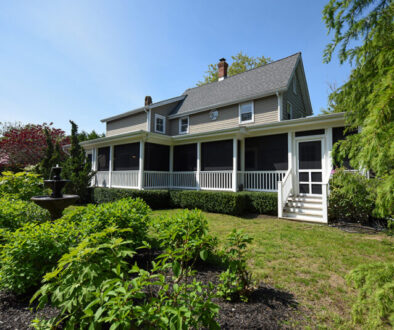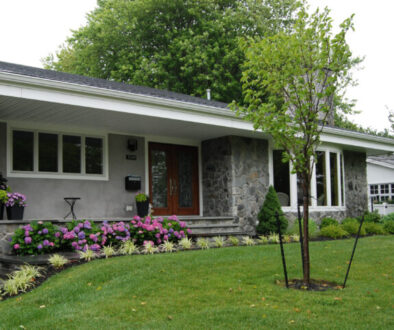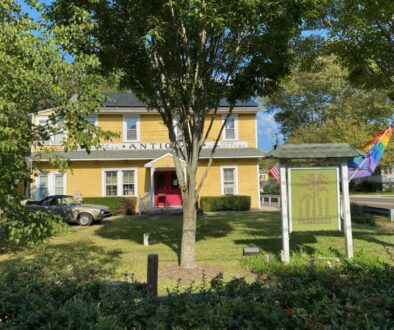The DRBA
Boats, Planes, and Automobiles—and the acronyms of the Delaware River and Bay Authority

When hearing the acronym DRBA, people either have no idea what it stands for, or they immediately think of it as the Cape May-Lewes Ferry (CMLF), and they would be correct. But it is much more than that … and they all have acronyms. The DRBA is an organization with diverse resources that includes ferries, a bridge, five airports, and one park. Their mission is complex, yet simple: “to connect people and places in the heart of the Northeast Corridor.” Something to think about as you read on: Where would we be without the DRBA? Or perhaps more accurately: where wouldn’t we be?
The DRBA began in 1962 as the result of an “interstate compact,” (an agreement connecting two states for a cooperative purpose). This treaty, of sorts, created a quasi-governmental bi-state agency between New Jersey and Delaware, responsible for administering shared resources, and that resource is transportation. The DRBA has its own police department with limited jurisdiction in both Delaware and New Jersey, providing law enforcement at each location.
This is a particularly exciting time at the DRBA. New developments keep rolling out, and plans are in the works for future travel between New Jersey and Delaware—and beyond! The DRBA has many layers, so let’s break it down to these three: boats, planes, and automobiles.
Boats!
There’s an old saying, “The only thing better than owning a boat is having a friend who owns a boat.” Not everyone has a friend who owns a boat that is ready and willing to take you on an excursion any day of the week at a time convenient to you. Not true! We all have a boat available almost any day of the year. It’s affordable, spacious, and you can bring your entire family and all your summer visitors. Everyone is welcome aboard the Cape May – Lewes Ferry (CMLF). The ferry has an interesting background, engaging present, and exciting future.
The CMLF celebrates its 60-year anniversary in 2024. On July 1, 1964, the first voyage commenced. Over the years, the CMLF has gone through challenges, changes, and growth. The captains’ faces and names have changed over the years, the first being Captain Billy Ray Philips, to the first female at the helm in 1982, Captain Linda Douglass, and first permanent female in 2020, Captain Sharon Urban.




Ferries have been replaced, refurbished, and retired. What happens to a ferry when it is being retired? Back in 2018, a “green” decision was made and the MV Twin Capes was scuttled, purposely sunk off the shores of New Jersey and Delaware, transforming her into an artificial reef, benefiting sea life and sports fishing.
Since 1964, over 17 million vehicles and over 45 million passengers have crossed Delaware Bay via the CMLF, helping keep the economy afloat. Take a three-hour round-trip tour across the bay and back. Travel with your automobile or walk on with a bicycle or as a foot passenger. If you plan a round trip, do not miss the last boat back!
The Cape May terminal offers three dining options, outdoor space for summer concerts, festivals, and even an art gallery inside. For more information and updates, visitferrypark.com. The ferries also offer food and beverages options on board. Climb aboard, and enjoy the voyage, scanning the waters and sky for dolphins, whales, and our abundant feathered friends.
The Ferry of the Future
Big changes are coming to the ferry. The DRBA holds virtual public meetings you can view by visiting www.cmlf.com/marine-master-plan. Find out all the interesting details of the ferry’s future. Big plans are in the works for a new fleet including four 75-vehicle ferry vessels. You might think these presentations from engineers and administration would be dry and boring, but they are actually quite engaging. During this planning phase, the DRBA is seeking community feedback, calling it “critical to the plan,” with various options to provide it.
“We have taken great strides to make sure that the public on both sides of the Bay and major stakeholders have had input and are involved in the process,” said Heath Gehrke, Director of Ferry Operations for the DRBA. “The direction of the plan comes directly from feedback not only from participants, but also from our marine crews who will be responsible for operating the vessels. This is a long-term vision for the ferry. We’re planning for the next generation of vessels that’s going to impact the operating expenses of the ferry well into the future. As an organization, we have to get it right.” Don’t miss the boat on having a say!
For more information on the CMLF offerings, visit cmlf.com. That’s it for the DRBA ferry portion of this article. Or is it?
Did you know about the other ferry?
Forts Ferry Crossing
History lovers, the Forts Ferry Crossing is open seasonally (starting late May) providing transportation from very quaint Delaware City to Forts Delaware and Dupont in Delaware and Fort Mott, New Jersey for foot passage only. Their simple mission: “bringing people to the historic river forts on both sides of the Delaware River.”
Planes!
The DRBA has a lot of new plans taking flight in their impressive air travel sector, which includes five airports.




Cape May Airport from airplane. Ground Breaking Ceremony for the new WWD Terminal, coming Spring 2024.
Wilmington Airport (ILG is the acronym)
Delaware: the only state in the U.S. without commercial air travel. That is, until now.
With easy access from Philadelphia, New York City, and Washington DC, travelers can now travel commercially through ILG on Avelo Airlines. Great news for the snowbirds or anyone wanting a quick and easy (and affordable) Florida getaway in winter, Avelo offers air travel from ILG to several cities in Florida, North Carolina, South Carolina, and Tennessee, with more destinations being planned. They offer hangers and runways for private planes. Parking and navigating this smaller airport are easy in comparison to some larger airports.
It is also home to a business park, providing space for lease, benefiting the local economy. “Avelo Airlines and Wilmington Airport continue to enjoy robust demand for scheduled air service to great destinations,” said Stephen D. Williams, Deputy Executive Director of the DRBA. “Avelo’s expansion is historic. With the airline’s 14 cities now on the schedule, Wilmington Airport offers the most nonstop flight destinations in its history and the second based aircraft brings additional quality jobs for area citizens.” More information can be found at aveloair.com.
Millville Executive Airport
Currently undergoing a modernization transformation with over $25 million in federal funds, Millville Executive Airport dates to 1941 as “America’s First Defense Airport” for the U.S. Army Air Corps. In Millville, a common logo for schools, sports teams, and business names is the “thunderbolt logo.” This comes from the Thunderbolt heavy fighter bomber training that occurred by the over 10,000 men and women who served, according to mivairport.com. Today, this airport is a place for private and business aircraft, also benefiting the local economy, offering retail and business facilities.
Delaware Airpark
Airpark? What is the difference between an airpark and an airport? Airparks are small, and usually located in an industrial area. Yes, they offer corporate and recreational flight facilities, but this Cheswold, Delaware “airpark” is a major training facility for Delaware State University’s flight training program.
If you notice a lot of air traffic in the summer, that is because NASA and the U.S. Air Force ROTC pilots are going through training at this location. Worth noting, it also hosts NASCAR racing and the popular Firefly Music Festival.
The Civil Air Terminal
Located at the Dover Air Force Base, this air terminal offers civilian use facilities, but a pilot must plan accordingly; gaining permission for landing is required 72 hours in advance, since this is primarily a military base.
Last but not least…the Cape May Airport
Have you ever been to The Flight Deck? No, not the actual location of take-off. Located at Cape May Airport, it is the restaurant where many locals and visitors stop for breakfast or lunch. Perhaps you’ve been to the Cape May Brewery. Maybe you’ve heard about the new technology companies headquartered in their “tech village,” such as Cellular Tracking Technologies or the artisan vendor space. The Naval Air Station Aviation Museum or Vietnam Veterans museums are also on site, and definitely worth a visit. Cape May Airport also provides hangar space, with over 39,000 private, business, and helicopter take-offs and landings each year, according to capemayairport.com.
What’s new? “We’re excited to celebrate the start of construction on this important new building,” said Thomas J. Cook, DRBA Executive Director. “The Authority has a great working relationship with both County officials and Lower Township leaders that’s focused on transforming and modernizing the airport.” On May 18th, the DRBA held a groundbreaking ceremony, celebrating the planned construction of a new $7.4 million terminal, with completion expected early in 2024. The building will include offices, a customer support department, and meeting space.
“The Board of County Commissioners is excited to see the start of the terminal building project,” remarked Cape May County Commission Director Len Desiderio. “We are proud of the relationship we have developed with the Delaware River and Bay Authority and the continued improvements being made at the Cape May Airport. We thank the DRBA for taking the lead in this project and appreciate their partnership with Cape May County.”
“The construction of this new terminal building continues to bring this airport well into the 21st century,” said Lower Township Mayor Frank Sippel. “The partnership between the DRBA, Cape May County, and Lower Township is second to none.”
Going back to the saying mentioned earlier about boats, well, the same goes for planes, and we have a friend with one who was generous to offer a short flight around the Cape, making for an aerial photo opportunity of the airport.
Automobiles!

The Delaware Memorial Bridge
As people flock to the southern shores of New Jersey singing “On the Way to Cape May” (you know you have), many travelers make their way via the Delaware Memorial Bridge. With a combined total of eight lanes, more than 100,000 vehicles cross this twin-spanned bridge every day. The Delaware Memorial Bridge opened to traffic in 1951, and in 1968 the twin span was dedicated. The bridge is an impressive feat by human hands, and it is hard to overlook the architecture of the twin bridges. But remember each time you cross over from Delaware to New Jersey or vice versa, this is more than just a bridge. It is a lasting memorial, dedicated as such, honoring U.S. military members who paid the ultimate price in World War II, the Korean Conflict, Vietnam, and Operation Desert Storm.

Veterans Memorial Park
The park is located on the Delaware side of the Delaware Memorial Bridge, and honors fallen heroes from Delaware and New Jersey. The DRBA takes this place very seriously, committing resources to the maintenance and development here. So many travelers drive past without realizing it is there, yet it’s a vast and meticulously landscaped space, inviting visitors to pay homage any day of the year. The Veterans Memorial Park was dedicated in 1956. It is a space where weary travelers have a place to stop, pause, and regain perspective. There are several stately monuments, providing a space of honor, a U.S. history lesson through the lens of these memorials paying tribute to all men and women of Delaware and New Jersey who gave the ultimate sacrifice. For more information, visit veteransmemorialpark.us.
Boats! Planes! Automobiles! Dedicated police force! Historic parks! Restaurants! Business parks! And a fast-growing future that contributes to the local economies. Where would (or wouldn’t) we be without them? As humans we tend to take things for granted, even the ability to travel with ease to be connected to the people and places we love.



